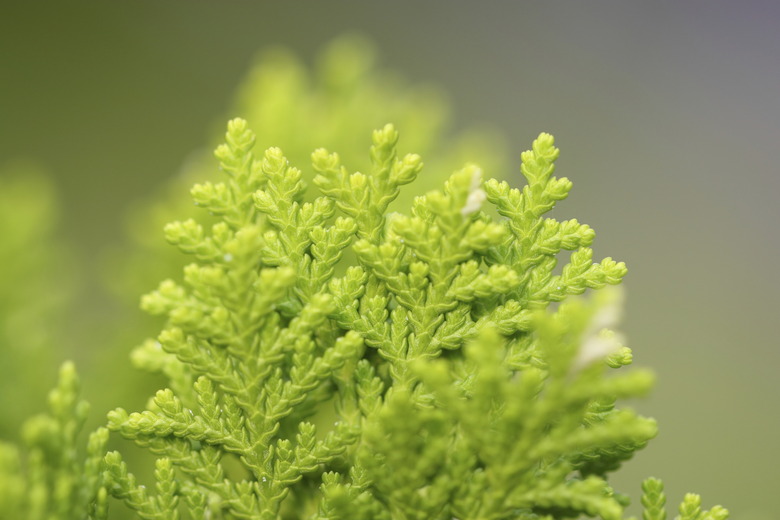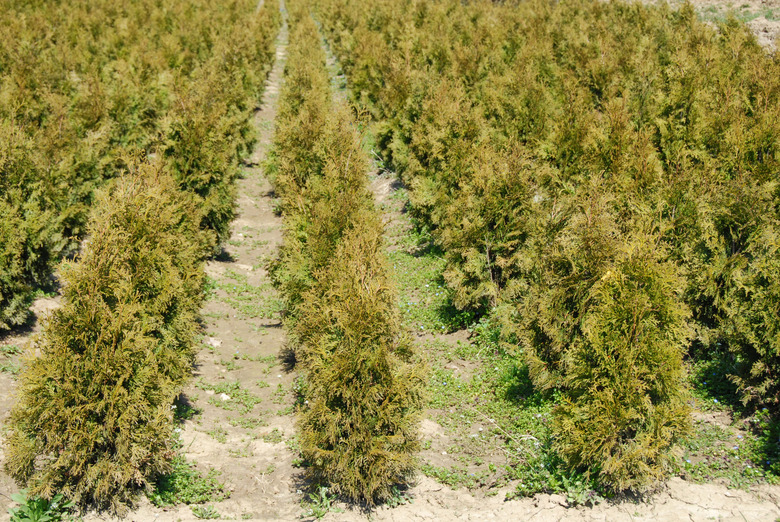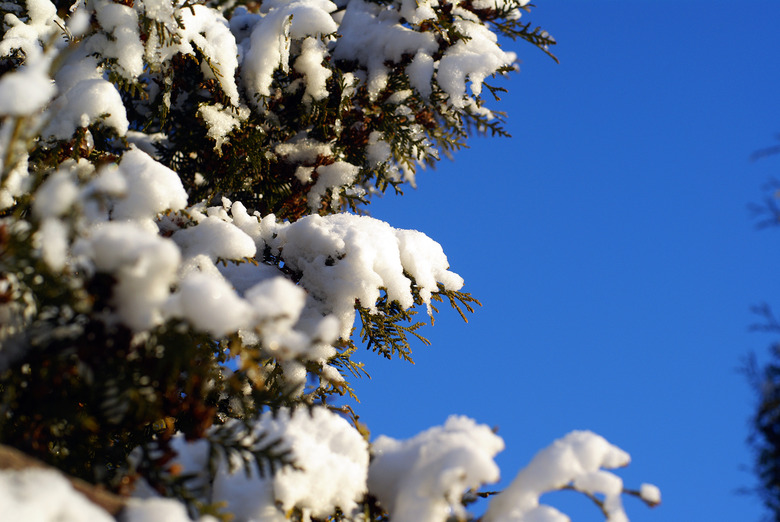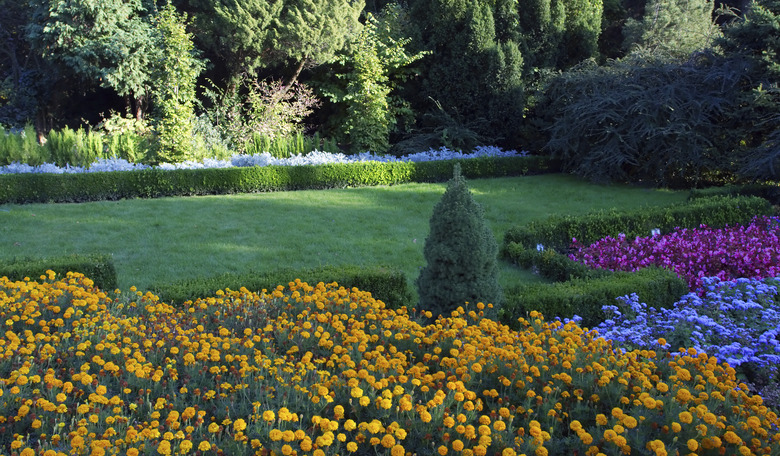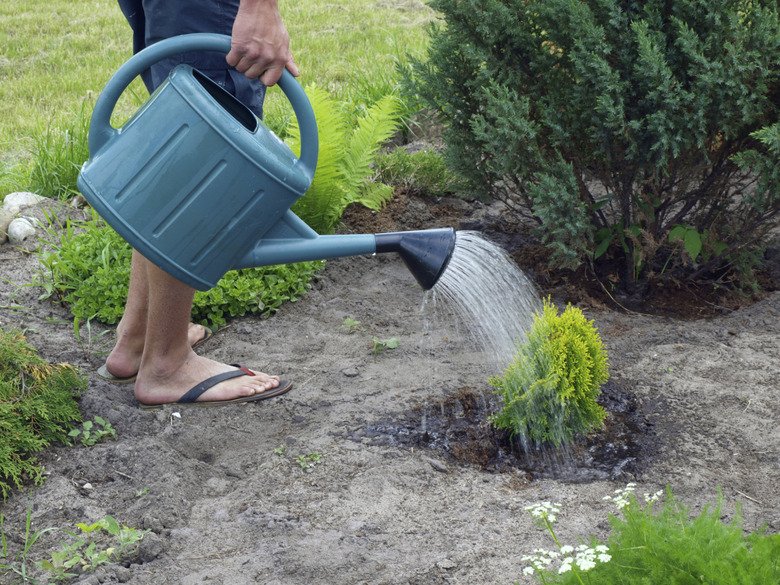My Arborvitae Tree Is Turning Brown From The Inside
Arborvitae trees (Thuja spp.) are standard evergreen landscape plants found throughout the Northern United States. They are conifer trees native to the Northeastern United States and Eastern Canada. Arborvitae is hardy in U.S. Department of Agriculture Plant Hardiness Zones 3 to 7 and generally has few problems. Browning on the inside branches of the arborvitae means it's time to investigate the likely causes and treat the tree if necessary.
Browing of Arborvitae
Browing of Arborvitae
Browning of arborvitae can indicate several different conditions. Browning of the inside branches often occurs to shed old limbs to make room for new ones, according to Ohio State University horticulturist Elton M. Smith. These can be removed without harm to the tree. Browning of the tips of branches can occur after a hard winter. These regenerate new growth without difficulty. Low branches near the soil line may turn brown and bark may split where hard freezes expand the moisture around trees. Aphids and spider mites can attack arborvitae trees, damaging foliage and cause large, brown areas. Fungal disease can also attack arborvitae shrubs, causing yellow or brown spots on branch tips that can spread to the inside of the branch causing it to die.
Weather Damage
Weather Damage
Excessive cold turns branches brown. This is not a cause for concern if the arborvitae is generally healthy. See that the plant is well watered in spring. Removing weathered branches allows new branches to fill in the space and provides air circulation. Fertilize arborvitae with lawn type fertilizer that does not contain weed killer at a rate of 2 to 4 lbs. per 100 square feet.
Pest Problems
Pest Problems
Arborvitae suffers from a number of pest problems. Control spider mites with application of superior oil during the dormant season, according to CollierArbor. Dislodge aphids with a forceful spray of water. Fungal diseases cause browning of arborvitae. Remove all affected areas and spray with a fungicide recommended by your local county extension service.
Watering Problems
Watering Problems
Arborvitae are plants that are native to wet, swampy areas. They require considerable amount of water to remain healthy and suffer sunscorching if not watered during dry periods. They can also suffer from overwatering. Do not water by the clock or calendar. Check the soil under the arborvitae. If it is still moist, don't water it, according to University of Illinois Extension Service horticulturist Greg Stack. If the soil is dry, water deeply and apply mulch to retain moisture. Let the soil dry out between waterings. Do not let the soil remain wet for too long.
